















- Locations
- United States
- US Blogs
- Agile Deployment for Modern HCP Engagement
While healthcare providers (HCPs) have shown a growing interest in, and commitment to, digital engagement over the last few years, they still believe that in-person engagement with pharma companies is critical.
A new, integrated and omnichannel HCP engagement model is emerging, where in-person, digital, and virtual engagement all work in harmony with one another. This model enables life sciences companies to deliver more dynamic, real-time messaging to drive more personalized engagement and enable more flexible and agile deployment of resources. Agile deployment will support the brand’s needs, unique to their mechanism of action, access profile, and treatment algorithm.
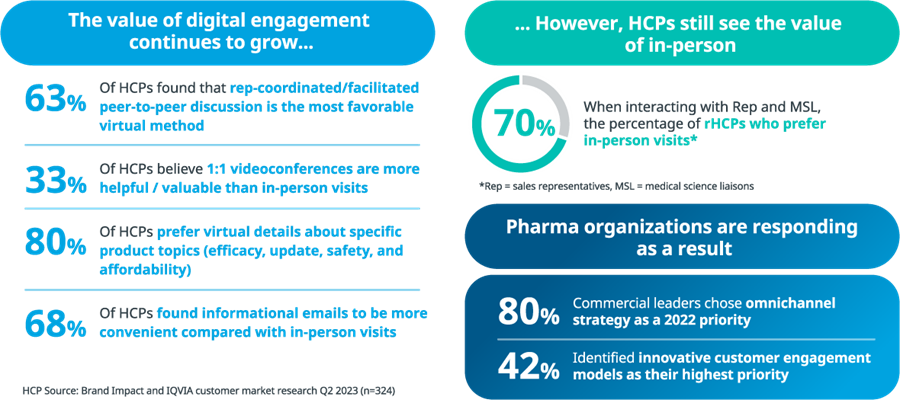
IQVIA’s Agile Brand Promotion framework captures these concepts and goes beyond the buzzwords of ‘right customer, right cadence, right channel, and right content.’
IQVIA’s Agile Brand Promotion Framework
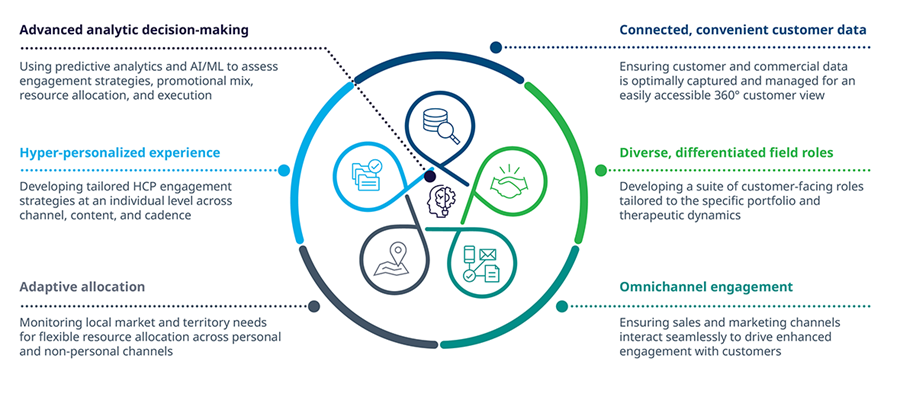
This blog focuses on two of the above core pillars of the Agile Brand Promotion framework:
- Diverse, differentiated field roles
- Adaptive allocation
We explore how to bring in face-to-face, virtual, and hybrid roles with agility and flexibility to better engage with HCPs in the marketplace. Selecting and designing the right roles for your organization and bringing them together with the right enablers will help drive a much more optimal, modernized HCP engagement model.
Balancing channel mix and promotional investments with economic pressures
Currently, there’s a convergence of pressure points for the life sciences industry with the need to do more with less budget and open up more channels to support and engage stakeholders, and brand leaders are wondering how to incorporate innovative channels and balance new investments with their most valuable resources: field sales teams.
The industry’s growth engine is driven by therapeutic areas with unmet needs, such as rare disease and oncology, with smaller patient populations, complex patient journeys, and smaller HCP targets with very little time. The current economic pressures make these challenges more acute.
To stand out in today’s crowded specialty market, engagements must be timely and relevant to demonstrate value and relevance and make an impact. Personalized messages must be delivered at the right moment, through the right channel for the right HCP. Three in five HCPs are feeling oversaturated with digital content that isn’t always of value to them, and life sciences organizations can’t necessarily meet the needs of smaller HCP targets with traditional omnichannel engagement.
In the face of these challenges, go-to-market plans need to be nimbler to evolve more frequently in response to the rapidly changing local market dynamics. Organizations need to rethink the traditional staffing model and introduce more agility with a variable model through outsourced teams, so they can pivot to capitalize on an opportunity or respond to a challenge.
Depending on the specifics of your organization and customer needs, the correct mix of channels and resources will be different — and the market is continuing to evolve. Planning needs to include room for agility, to meet HCP needs both on a national scope and in local markets.
There is an increasing volume and variety of roles within pharma to engage the various healthcare ecosystem stakeholders. But the roles you need and how they fit together is not a one-size-fits-all model.
Developing, recruiting, retaining, and enabling the necessary resources and capabilities
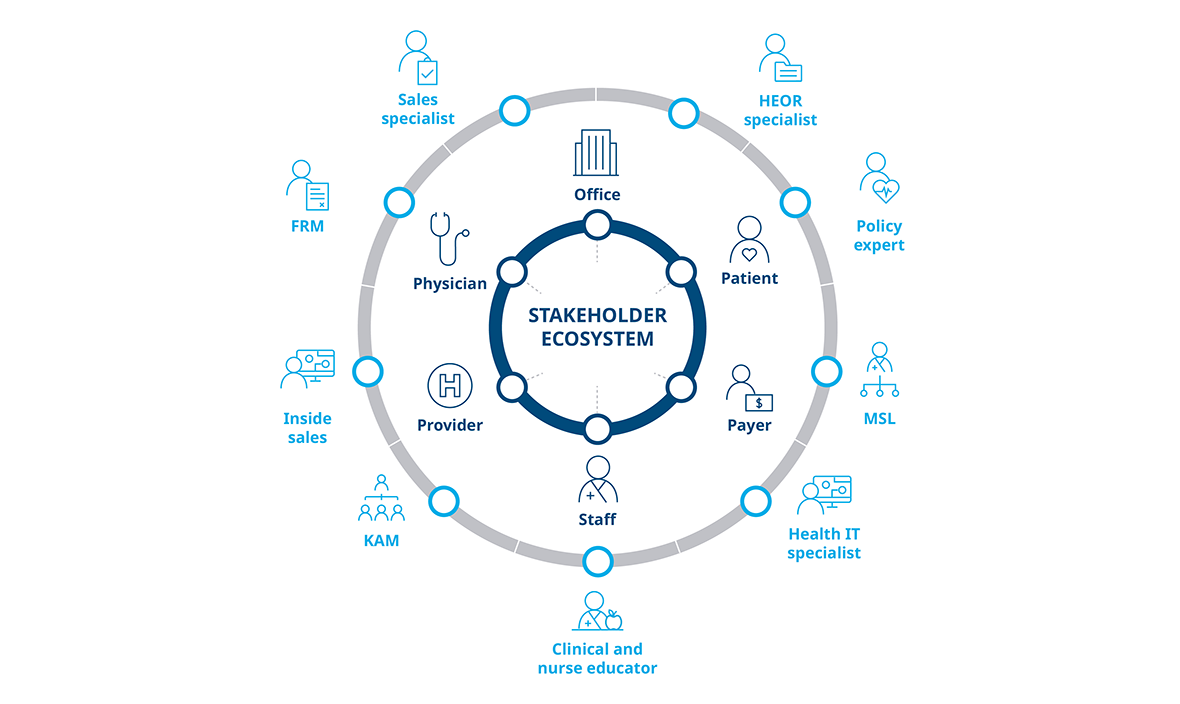
Determining which roles should be in-person, hybrid, and virtual
Go-to-market strategies never stop evolving, and organizations need to continue to adapt to local market dynamics. Thus, the mix of in-person, hybrid, and virtual roles at the organization will not be one-size-fits-all. For example, what is right for diabetes will not be the same as what is right for multiple myeloma.
Organizations also need to rethink the traditional business rules regarding personal promotion design, regarding HCP decile, number of targets, connection to networks and KOLs, HCP preferences for digital content, where HCPs go to get new information, the driving radius of a territory, and more.
The industry now has data-driven analytics to link annual investment planning or brand planning with the tweaks needed on the day-to-day basis to evaluate who goes where, with what message, and in what order. Those analytics provide a feedback loop that help brands be agile and pivot.
Enabling adaptive and responsive resource allocation and deployment models.
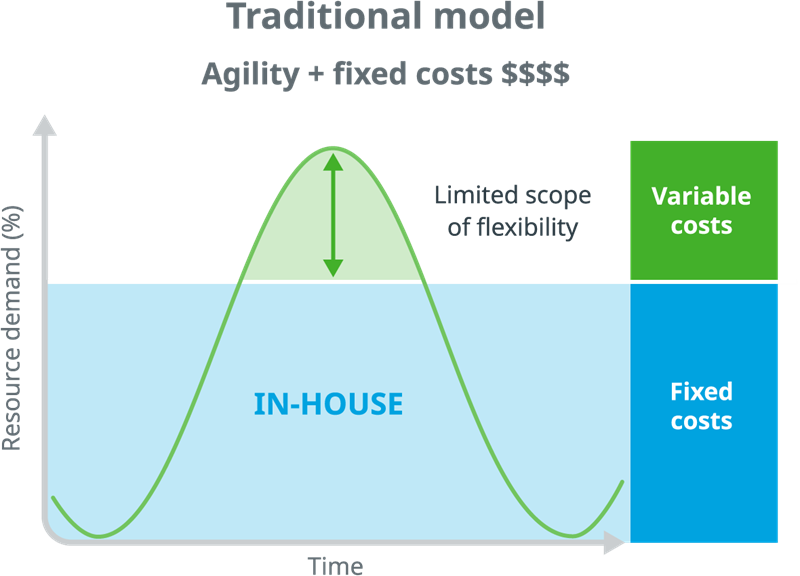
The risks of the fixed model above include missing some of the opportunities, delaying the impact of the brand, and diluting the ROI. Moving from a fixed to a variable model gives brands agility, speed, cost efficiencies, and the ability to adjust their go-to-market strategy.
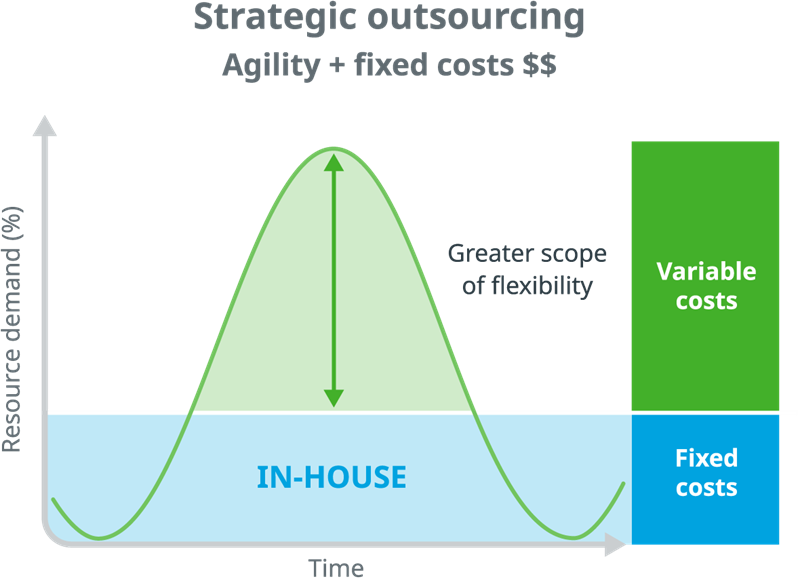
Strategic outsourcing enables you to rapidly evolve your promotional mix in response to actionable insights, your product lifecycle, and keep pace with the ever-changing local market dynamics.
It can be challenging to understand where the variability lies and what the right flexible model might look like. Many organizations have a strong data infrastructure and think about data management in a modern way. But the variable model brings holistic data and analytics together.
Let’s start the conversation.
Sales and brand leaders are in a state of information overload with HCP analytics, having to dig for the right piece of information to make a critical decision. AI/ML algorithms can help make clarity out of the complexity.
It’s an exciting time in life sciences where advanced algorithms can bring HCP data, patient data, and analytics together in a compliant way to accelerate insights that ultimately help physicians find lifesaving and life-improving treatment options.
The opportunity — and obligation — for life sciences organizations is to continue to make the right resource allocation decisions for the stakeholders, regardless of where they are in the ecosystem.
There isn’t going to be a one-size-fits-all solution, and that’s where IQVIA can help. We help our clients gain the ability to build agile, modern, and data-driven resource allocation and HCP engagement strategies.
Related solutions
Data, AI, and expertise empower Commercial Solutions to optimize strategy, accelerate market access, and maximize brand performance.
Leapfrog the competition by proving the value of your products
See how we partner with organizations across the healthcare ecosystem, from emerging biotechnology and large pharmaceutical, to medical technology, consumer health, and more, to drive human health forward.
Flexible solutions. Responsive teams. Data-driven insights.




